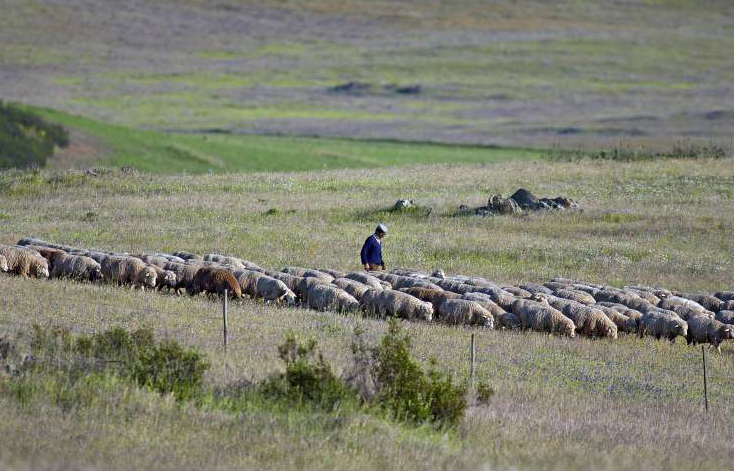Maintaining open landscapes to preserve mountain biodiversity
Mountain grasslands in southern Europe are facing a loss of biodiversity due to landscape closure. Rural migration and land abandonment are leading to the progressive reforestation of these pastures and to an increase in the risk of fire, which results in the degradation of habitats and species specific to these regions. In northern Portugal, combined actions of targeted grazing and clearing are implemented to reduce these risks and preserve mountain biodiversity.
Landscape closure and biodiversity loss
The progressive abandonment of agricultural land and pastures since the second half of the 20th century has led to a gradual reforestation in northern Portugal. The closure of the landscape leads to an increase in fire risk which endangers the species and habitats of these grasslands. Over the last 36 years, Portugal has been the only country in Southern Europe unable to significantly reduce the area of land affected by fire.
In the Bragança region, under grazing makes it impossible to keep the combustible cover low and to maintain open landscapes which are less vulnerable to fire. In the face of fire risk, in a region where many fire starts are caused by human inattention but also where the risk is increasing with climate change, the authorities want to better control the combustible biomass to preserve biodiversity.
Targeted grazing and clearing
In the municipality of Mirandela, located in Terra Quente Transmontana in the region of Bragança, a 4.3 ha plot is dedicated to an experiment to explore effective fuel management methods. On this plot, targeted grazing and mechanical clearing practices are combined in order to maintain open landscapes, reduce the risk of fire and thus decrease the loss of biodiversity that is associated with them.
The pilot site is divided into three plots, on which different practices are applied to compare their effectiveness in managing fuels and consequently reducing fire risk. The experiment is composed of:
- A grazed plot without mechanical cleaning of approximately 906 m²
- A 400m² plot where only mechanical clearing is practised
- A 41,940m² plot where targeted grazing and mechanical clearing are combined
On the pilot site, a control strip of 10×40 m² was left untouched in order to allow a comparison of the evolution of the vegetation and analyse the effectiveness of the experiment.
A flock of about 190 sheep grazes on and around the pilot site on two of the plots. The animals, raised for their meat, are from the local breed “Churra Galega Bragançana” which is particularly adapted to the territory. The maintenance of this breed in the region has been supported by the EAFRD during the period 2014-2020, under the section “Maintenance of indigenous endangered breeds” (the breed has 12,578 animals among 1242 breeders). The feed of this local breed is mainly based on grazing, for 9 to 10 hours a day, which can be supplemented by fodder if the grass becomes insufficient. For the experiment, the cattle are grazed on the pilot plot in spring and autumn until the forage resources of the land are fully used. GPS tracking of the sheep is used to measure the number of hours and days they graze on the plot.
In addition to targeted grazing, mechanical clearing is performed on some parts of the site since May 2019. It was also planned to test controlled burning on the site, but meteorological conditions were not good enough. The use of fire to facilitate pasture renewal and biomass management is a traditional practice regulated in Portugal by Decree-Law No. 14/2019 of 21. This legal framework states that burning can only be carried out after submitting a request and receiving authorisation from the relevant municipality. The application is analysed taking into account the weather conditions and the operational management of the action (the decree-law requires the presence of an accredited technician or a team of firemen or foresters). As a result of the decree-law, an online platform for extensive burning has also been created under the management of the Institute of Nature Conservation and Forestry.
The Department of Environment and Natural Resources of the School of Agriculture of the Polytechnic Institute of Bragança is currently comparing and assessing the different techniques used on the experimental area. It appears that vegetation and shrubs have grown on all plots, but at different speeds. It would appear that the most effective method for limiting vegetation cover and fire risk would be a combination of grazing and mechanical clearing; these are preliminary conclusions that will be developed in a full report.
